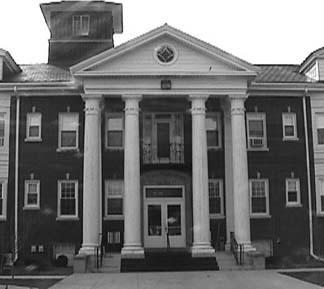| | Thomas's gloves and gold-headed cane are all in the local museum.) The 1903 Oldsmobile was willed to the Smithsonian Institution following Thomas's death in 1944. The car, which is in very good condition, is on permanent display as a part of the Road Transportation Home. "There are still quite a few of these cars in existence, but not as many as the Model-T, which was made in greater numbers," said Roger White, Division of Transportation of the Smithsonian. "The car, when bought brand new in 1903, retailed at $650." The Thomas Peabodys were also global travelers and made many voyages. So many, in fact that when they returned to their home, Mary would mail out cards announcing they were at the "Journey's End." This was their name for the homestead in North Manchester. One of Thomas's earliest foreign tours was to the old world. On this trip he visited Italy, Austria, Switzerland, France, Germany, Belgium and the British Isles. While this four-month journey was primarily for pleasure, Thomas also devoted some of his time to the interests of the Peabody desk factory. (Our local Historical Society Museum also holds one of the steamer trunks used on his overseas voyages) The next voyage that Thomas set out on was a tour around the world. For this trip, he and five hundred others chartered the steamship 'Cleveland' and set out to visit Gibraltar, Italy, Egypt, India and various other points of interest. While in Egypt he saw many interesting sights, among them the Sphinx and the pyramids. Perhaps the most interesting to him, however, was the mummy of Rameses II. "This trip was made for recreation and education," Thomas commented in 1909. The steamer concluded the circumnavigation of the world in San Francisco, after being at sea for nearly four months. Yet another voyage was made for their honeymoon, as a young Thomas and Mary traveled to New York by Manhattan Flyer and left for South America on the steamship "Laurentic.' On this trip in 1912, they first visited Havana, Cuba, then traveled to points in the West Indies, the Isthmus of Panama and other regions, expecting to be gone for at least five weeks. The couple saw the newly installed Panama Canal and reported that it was a gigantic project and quite a sight to | |




